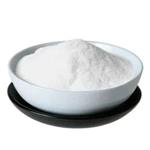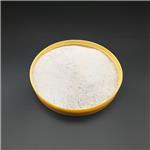- Oxytocin Acetate
-

- $5.00 / 1Box
-
2025-04-23
- CAS:6233-83-6
- Min. Order: 1Box
- Purity: 99.99%
- Supply Ability: 20000 boxes
- Oxytocin acetate
-

- $1.00 / 1g
-
2025-04-23
- CAS:6233-83-6
- Min. Order: 1g
- Purity: 99%
- Supply Ability: 100kg
- Oxytocin acetate
-

- $75.00 / 1kg
-
2025-04-22
- CAS:6233-83-6
- Min. Order: 10kg
- Purity: 0.99
- Supply Ability: 20tons
|
| | Oxytocin acetate Basic information |
| | Oxytocin acetate Chemical Properties |
| storage temp. | Store at -20°C | | solubility | DMSO:44.0(Max Conc. mg/mL);41.23(Max Conc. mM)
Water:50.0(Max Conc. mg/mL);46.85(Max Conc. mM) | | form | A crystalline solid | | color | White to off-white | | InChIKey | DSZOEVVLZMNAEH-SIVBSZNNNA-N |
| RIDADR | UN 2811 6.1 / PGII | | HS Code | 2937190000 |
| | Oxytocin acetate Usage And Synthesis |
| Description | Oxytocin acetate is an analog of oxytocin, a hormone that stimulates the uterus during labor. It is synthesized by chemically conjugation oxytocin with acetic acid. The stability of this molecule has been proven to be higher than that of oxytocin. This drug demonstrates a stronger binding affinity for the oxytocin receptor, which may be attributed to its increased molecular weight. Additionally, oxytocin acetate has been observed to increase levels of growth factors and fatty acids in tissues when administered intramuscularly, while also stimulating neurotransmission. It exhibits a shorter onset latency and a longer duration of action compared to other analogs. Apart from its medical applications, oxytocin acetate can also serve as a disinfectant in cosmetic use and as an amide-forming agent in organic synthesis reactions.
| | Chemical Properties | White Solid | | Uses | Oxytocin Acetate is the principal uterus-contracting and lactation-stimulating hormone of the posterior pituitary gland. | | Uses | Oxytocin acetate is the salt form of oxytocin and has a more stable structure than oxytocin. Oxytocin is a cyclic nonpeptide that is recommended by the World Health Organization (WHO) for the prevention and treatment of postpartum haemorrhage. Oxytocin is used to therapeutically induce labour and stimulate lactation, and is also the drug of choice for the prevention of postpartum haemorrhage. Oxytocin has also recently been tested for the treatment of social phobia, autism, alcoholism and schizophrenia, and has been investigated for its potential modulatory role in antinociception[1]. | | Mechanism of action | The actions of oxytocin are mediated by a single G protein-coupled receptor distributed in many peripheral tissues and specific brain areas. Oxytocin secreted into the circulation stimulates uterine contractions during labor and stimulates milk ejection during lactation. | | in vivo | During the LMA task, rat core body temperature are modestly decreased. Oxytocin acetate (subcutaneous injection; 0.1 mg/kg-0.3 mg/kg; single dose) produces significantly greater hypothermia (at 0.3 mg/kg) than either saline or the two lower doses of oxytocin. Oxytocin at 0.3 mg/kg produces a significantly greater decrease in temperature than vehicle between 15-60 min post injection, whereas 0.1 mg/kg slightly decreases temperature at the 30 min time point only[1].Oxytocin acetate (0.1 mg/kg) engages in significantly more body sniffing and ano-genital sniffing compared with saline controls. It also increases the total time spent in social interaction (71.6±4.3 s), compared to those receiving vehicle (56.9±4.1 s)[1]. | Animal Model: | Fifty-six male Lister-hooded rats (150–200?g)[1] | | Dosage: | 0.1?mg/kg-0.3 mg/kg | | Administration: | Subcutaneous?injection; 0.1?mg/kg-0.3 mg/kg; single dose | | Result: | Produced significantly greater hypothermia (at 0.3 mg/kg) than the saline group. |
| | IC 50 | Human Endogenous Metabolite | | References | [1] MOSTAFA GHASEMISARABBADIEH; Benjamín R S; Sveinbj?rn Gizurarson. The effect of trehalose, antioxidants, and acetate buffer concentration on oxytocin stability[J]. Journal of Peptide Science, 2021. DOI:10.1002/psc.3324. |
| | Oxytocin acetate Preparation Products And Raw materials |
|